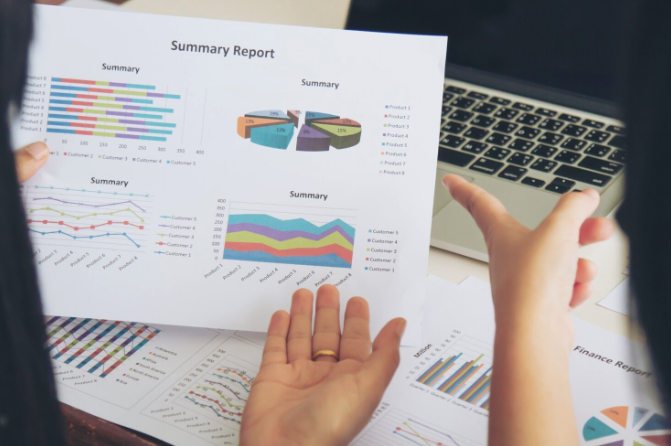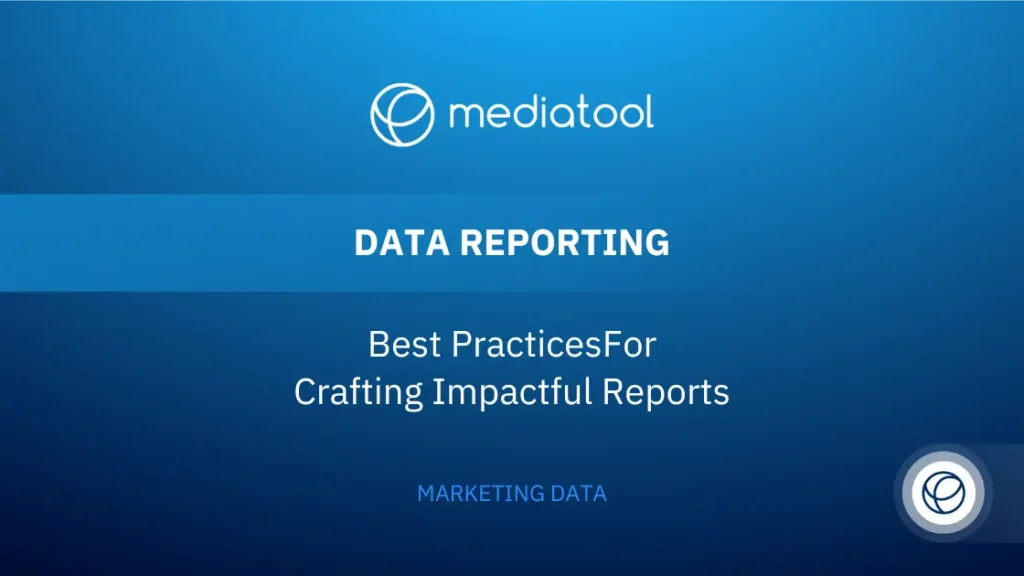What is Data Reporting?
Data reporting is the systematic approach to taking raw data and transforming it into a structured format that highlights key information, trends, and metrics. This process involves gathering, sorting, and analyzing data to create data reports that offer actionable insights.
Organizations can understand their performance metrics through data reporting, uncover growth opportunities, and engage in data-driven decision-making. It is foundational in converting voluminous data into digestible, actionable knowledge that can guide strategic planning and operational improvements.
Why is Data Reporting Important?
The significance of data reporting in the modern, data-centric business landscape cannot be overstated. It is the backbone for understanding business performance, enhancing customer experiences, and staying ahead of market dynamics.
By leveraging data reporting, organizations can make decisions that boost operational efficiency, cut unnecessary expenses, and enhance overall outcomes. It acts as a communication tool that ensures all stakeholders are aligned, informed, and equipped with the knowledge needed to eliminate guesswork and speculative decisions.
By creating data analysis reports and data report examples, businesses can showcase their successes, pinpoint areas for improvement, and strategize for future growth.
Types of Data Reports

Each type of report offers unique insights and serves different purposes, enhancing the decision-making process across departments.
Static Reports
Static reports represent the traditional backbone of data reporting. They provide a snapshot of data at a specific point in time, offering a clear, concise view of performance metrics or financial standings.
These reports are essential for historical data comparison, enabling organizations to measure growth, performance, and changes over time. Static reporting is crucial for documenting key metrics and ensuring accurate data is recorded for future analysis.
Ad Hoc Reports
Ad hoc reports are tailor-made to address specific questions or concerns. They allow for flexibility in data reporting processes, enabling users to drill down into particular areas of interest.
Whether it’s analyzing a sudden drop in website traffic or investigating fluctuations in market research data, ad hoc reports provide the custom insights needed to make informed business decisions. They exemplify the essence of creating data reports that cater to immediate, unique informational needs.
Interactive Visualizations
Interactive visualizations bring data to life, offering dynamic ways to explore and understand complex datasets. Users can interact with the data through charts, graphs, and maps, uncovering data-driven insights with just a few clicks.
This data report is instrumental in presenting data in engaging, easily digestible formats, making it easier to identify trends, anomalies, and patterns. Modern tools and data visualization platforms facilitate the creation of such reports, enhancing the data reporting process and fostering a data-driven organizational culture.
Financial Reports
Critical for tracking the financial health of an organization, financial reports aggregate data related to revenue, expenses, profitability, and more. These reports are foundational for business decisions, guiding strategy on both short-term and long-term scales.
Financial reporting processes utilize accurate data from multiple sources, ensuring stakeholders have a clear view of the company’s financial status.
Annual Reports
Annual reports offer a comprehensive overview of a company’s activities, achievements, and financial performance throughout the preceding year. They are essential to transparently communicating with shareholders, investors, and customers, showcasing business objectives, marketing efforts, and progress towards goals.
Annual reports combine various types of data reports, including financial data, market research findings, and customer satisfaction metrics, to present a holistic view of the organization’s success and areas for improvement.
Marketing Performance Reports
These reports analyze marketing campaign data and assess the effectiveness of marketing efforts across different channels.
By leveraging data analytics, such reports evaluate key performance indicators (KPIs), such as engagement rates, conversion rates, andreturn on investment (ROI). Marketing performance reports are vital for optimizing strategies, allocating budgets efficiently, and maximizing campaign outcomes.
Website Traffic Reports
Generated through tools like Google Analytics, website traffic reports offer insights into the behavior of visitors to a website. These reports track key metrics such as page views, bounce rates, and user engagement, providing valuable data for optimizing web presence and enhancing user experience.
Successful data reporting in this area helps organizations understand how users interact with their site, guiding improvements and driving conversions.
Customer Insights Reports
Focusing on customer behavior, preferences, and feedback, customer insights reports are crucial for tailoring marketing strategies to meet consumer needs.
By collecting and analyzing data from various touchpoints, these reports reveal patterns in customer behavior, helping businesses enhance product offerings, customer service, and overall satisfaction. Effective data reporting here supports a customer-centric approach, driving loyalty and growth.
Social Media Analytics Reports
These reports analyze interactions, engagement, and trends across social media platforms. They provide actionable insights into the performance of social media campaigns, audience demographics, and content preferences.
Social media analytics reports help refine content strategies, boost engagement, and increase reach by monitoring key metrics and utilizing data visualizations.
Each type of data report offers unique insights and benefits. By understanding and utilizing a range of reports, organizations can harness the power of data to inform strategies, improve performance, and achieve business goals. Effective data reporting is not just about collecting and presenting data; it’s about translating data into actionable insights that drive decision-making and success.
How to Write a Data Report
Creating a compelling data report is an essential skill that involves a structured process and attention to detail. Here’s a detailed guide to writing an effective data report, incorporating best practices and key steps:
Collect Data
The foundation of any data report is robust data collection. Gather data from various sources to ensure a comprehensive and nuanced view of the subject at hand.
Utilizing a cloud data platform can streamline this process, allowing for the automatic aggregation of data from multiple sources. This step is critical for ensuring the data’s relevancy and accuracy, which are pivotal in creating data reports that are both informative and reliable.
Analyze Data
Once data is collected, the next step is to dive deep into data analysis. This involves examining the data to identify patterns, trends, and insights that inform your report.
A data analysis report is instrumental in transforming raw data into actionable intelligence. Employing data analytics techniques and tools at this stage can help uncover hidden insights and ensure that the data is analyzed efficiently and effectively.
Choose Relevant Data
Not all collected data will be relevant to your report’s objectives. Sifting through the data to select the most pertinent information is essential. This step ensures that your report is not overwhelmed with extraneous data, making it easier for your audience to understand the key messages.
Choosing relevant metrics and data points that align closely with your report’s goals will enhance its clarity and relevance.
Use Data Visualization Tools
Incorporate data visualizations such as charts, graphs, and tables to make your report more understandable and engaging.
These tools can help to present data in a more accessible way, making it easier for your audience to grasp complex information at a glance.
Bar charts, pie charts, and line graphs are just a few data reporting examples of how you can visually represent your findings effectively. Modern reports leverage these visualizations to enhance the presentation and comprehension of data.
Present Key Findings
Highlighting the most important insights from your analysis is crucial. This involves summarizing the key findings clearly and concisely. Ensure that these insights are directly related to your initial objectives and questions.
This step is about distilling the essence of your data analysis and presenting it in an informative and actionable way.
Draw Conclusions
Draw conclusions that address the report’s objectives based on the key findings. This may include interpreting the data in the context of the wider research or business environment, suggesting reasons for specific trends, and offering insights into what the data reveals.
Suggest possible next steps or actions that could be taken in light of these conclusions.
Review for Accuracy
Before finalizing your report, conduct a thorough review to ensure the accuracy of the data and the clarity of your report. This includes checking for errors in data, ensuring that all visualizations accurately reflect the data, and reviewing the report for clarity and conciseness.
A concise, clear, error-free report will be more credible and effective.
Incorporating these steps into your data reporting process can significantly enhance the quality and impact of your reports. Whether you’re creating data reports for internal stakeholders, clients, or public dissemination, following this structured approach will help you deliver clear, insightful, and actionable reports.
Remember, data reporting aims not just to present data, but to tell a story that drives understanding and action.
Data Reporting Challenges & Mistakes To Avoid

Navigating the complexities of data reporting requires a careful approach to avoid common pitfalls that can undermine the credibility and effectiveness of your reports. Here are several key challenges and mistakes to be mindful of, along with strategies to mitigate them:
Overlooking Data Accuracy
Ensuring the accuracy of your data is paramount. Inaccurate data can lead to erroneous conclusions and decisions, potentially causing significant harm.
To avoid this, implement rigorous data management practices.
This includes double-checking data sources, using validation techniques, and consistently monitoring data for any discrepancies. Creating data reports that rely on accurate data is not only about maintaining credibility but also about fostering trust with your audience.
Ignoring Data Sources
Transparency about your data sources enhances the credibility of your report. It’s crucial to clearly cite where your data comes from, whether it’s from internal databases, public datasets, or third-party providers.
This transparency helps in building trust with your audience and adds a layer of verifiability to your work. When you create reports, ensure that you include detailed information about your data sources, enabling others to understand the foundation of your analysis.
Forgetting the Audience
A common mistake in data reporting is failing to tailor the report to the specific needs and understanding level of your audience. What may seem obvious to you might not be so for your audience.
To effectively communicate your findings, consider your audience’s background, expertise, and interests. This might mean simplifying complex concepts or providing additional context to make the information more accessible.
Successful data reporting involves crafting your message in a way that resonates with and is clear to your intended audience.
Overcomplicating the Report
Complexity can be the enemy of clarity. Overcomplicating your report with jargon, excessive detail, or convoluted data visualizations can overwhelm and alienate your audience.
Strive to keep your report concise and focused on the most relevant information. This doesn’t mean omitting necessary detail but rather presenting your findings in a clear, straightforward manner.
A report concise in nature and presentation ensures that your key messages are communicated effectively.
Not Using Data Visualization
Data visualization is a powerful tool for conveying complex information in an intuitive and engaging way. Skipping this aspect can make your report less effective. Utilize charts, graphs, and infographics to highlight key findings, identify trends, and present data in a digestible format.
When done correctly, visualizations can significantly enhance the understanding and impact of your data. Remember, a well-designed chart or graph can communicate more information at a glance than several paragraphs of text.
By being mindful of these challenges and actively working to avoid these common mistakes, you can significantly improve the quality and impact of your data reports. Whether you’re building data reports, creating custom reports, or preparing an annual report, applying these best practices will help you deliver insights clearly, accurately, and impactfully.
Data reporting aims not just to present numbers but to tell a story that informs, persuades, and inspires action.
Mediatool Makes Your Data Reporting Simple and Effective
Data reporting should turn complex data into a clear story. A good report makes data easy to understand for everyone on the team, showing what’s happening and what should be done next. When it comes to marketing, seeing and understanding these data stories quickly is key.
Mediatool stands out among tools for making marketing reports. It doesn’t just show data; it brings your data together on custom dashboards. This helps you see and understand important insights faster, giving you more time to act on them. Plus, Mediatool works in the background, updating your reports with real-time data. You don’t have to spend time building reports; they’re ready when you are.
What Makes Mediatool’s Reporting Dashboards Great
Mediatool’s dashboard is all about making data reporting easy. It takes data from different marketing campaigns and shows it in a way that’s quick to understand. This means you can spot important trends and metrics quickly and adjust your marketing plans without delay. The dashboard updates automatically with the latest data, so you always have the most current insights without having to do anything extra.
How Mediatool Fits into Your Data Reporting
In marketing, things change fast, and keeping up can be tough. Mediatool makes it easier by handling the heavy lifting of data reporting for you. It puts together and shows your data automatically, cutting down on the time and effort needed to make reports. This lets you spend more time thinking about what the data means and planning your next moves.
Mediatool Helps You Make Better Marketing Decisions
Mediatool is all about making data reporting straightforward and useful. It turns the often complex job of analyzing data into something much simpler and more user-friendly. With Mediatool, you get to understand your data better, making it easier to decide what to do next and change your strategies to meet the market’s needs.
We suggest giving Mediatool a go. See for yourself how it can change the way you report on data, making the process more streamlined and your marketing strategies more informed. Mediatool isn’t just another tool; it’s a way to make your data work harder for you.
Conclusion
This guide to data reporting is your starting point to understanding and mastering the art of presenting data. With practice, the right tools, and a focus on accuracy and relevance, you’ll unlock valuable insights that can drive your organization forward.
Remember, effective data reporting is about clarity, precision, and insight. Embrace these principles, and you’re well on your way to becoming a data reporting expert.





